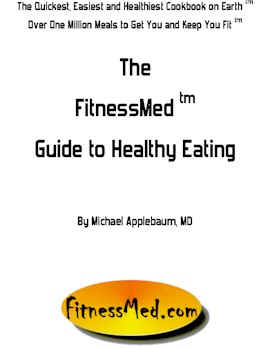
It is not about the vegetables and vegetables are not the key. Calories in vs. Calories out is.
Still, this is more information reinforcing why the rest of us should not pay for fat people's diseases of choice.
Though at Fitness Watch we remain steadfast that caloric intake control is the main goal, that people simply are unwilling to do what it takes to improve their health and lessen the burden they place on the rest of us is the real point of this article.
It’s been a busy week for vegetables.The solutions are clear - we must stop paying to rescue people from their diseases of choice and we must provide accurate, realistic, human behavior-based weight loss information if people are to have a chance at success.
The baby-carrot industry tried to reposition its product as junk food, starting a $25 million advertising campaign whose defining characteristics include heavy metal music, a phone app and a young man in a grocery cart dodging baby-carrot bullets fired by a woman in tight jeans.
On the East Side of Manhattan, crates of heirloom vegetables with names like Lady Godiva squash were auctioned for $1,000 each at Sotheby’s, where the wealthy are more accustomed to bidding on Warhols and Picassos than turnips and tomatoes.
Both efforts, high and low, are aimed at the same thing: getting America to eat its vegetables.
Good luck. Despite two decades of public health initiatives, stricter government dietary guidelines, record growth of farmers’ markets and the ease of products like salad in a bag, Americans still aren’t eating enough vegetables.
This month, the Centers for Disease Control and Prevention issued a comprehensive nationwide behavioral study of fruit and vegetable consumption. Only 26 percent of the nation’s adults eat vegetables three or more times a day, it concluded. (And no, that does not include French fries.)
These results fell far short of health objectives set by the federal government a decade ago. The amount of vegetables Americans eat is less than half of what public health officials had hoped. Worse, it has barely budged since 2000.
“It is disappointing,” said Dr. Jennifer Foltz, a pediatrician who helped compile the report. She, like other public health officials dedicated to improving the American diet, concedes that perhaps simply telling people to eat more vegetables isn’t working.
“There is nothing you can say that will get people to eat more veggies,” said Harry Balzer, the chief industry analyst for the NPD Group, a market research company.
This week, the company released the 25th edition of its annual report, “Eating Patterns in America.” The news there wasn’t good, either. For example, only 23 percent of meals include a vegetable, Mr. Balzer said. (Again, fries don’t count, but lettuce on a hamburger does.) The number of dinners prepared at home that included a salad was 17 percent; in 1994, it was 22 percent.
At restaurants, salads ordered as a main course at either lunch or dinner dropped by half since 1989, to a mere 5 percent, he said...
The food industry has tried to make eating vegetables easier. Sales of convenience vegetables, like packages of cut broccoli designed to go right into the microwave, are growing. Washed, ready-to-eat bagged salads are a $3-billion-a-year business.
But that doesn’t necessarily mean people are eating more vegetables. It just means they are shifting their vegetable budget from one place to another, Mr. Balzer said. An organic cucumber might replace a conventionally grown one. A bag of lettuce replaces a head.
But as in past attempts to revive the vegetable, none of this will necessarily be enough to change a clear aversion to eating vegetables.
“Eating vegetables is a lot less fun than eating flavor-blasted Doritos,” said Marcia Mogelonsly, a senior analyst for Mintel, a global marketing firm. “You will always have to fight that.”
Not the kind of crap that spouts from AdipOprah and her experts.
There are no other choices.








No comments:
Post a Comment